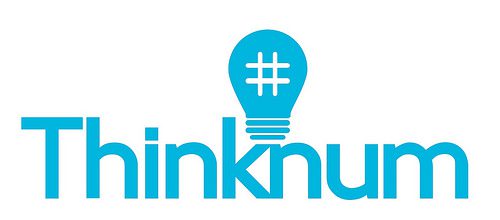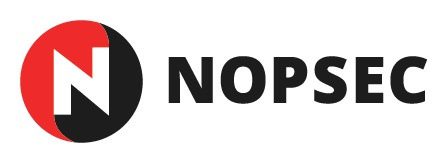
For many in attendance at FinovateSpring 2014 in San Jose watching the Interactions demo, the “Aha!” moment came when the virtual agent began speaking flawless Spanish.
The demo was already impressive, with murmurs of appreciation from the audience as the seamless call and response back and forth between the presenter and the Interactions virtual agent made believers of everyone in the room.
But the Spanish might have been the breaking point, that moment when technology seemed to do that thing that the great Arthur Clarke insisted it could always do: become indistinguishable from magic.
Magical as the technology may seem,
Interactions‘ virtual agent technology is far from magic. Rather, it is the result of a patent-pending technology that succeeds where other virtual technologies, including Apple’s Siri, have struggled.
Interactions technology has been deployed in industries ranging from retail to hospitality to healthcare, and include Fortune 500 financial services corporations. The company, founded ten years ago, is headquartered in Franklin, Massachusetts, and includes Softbank Capital, North Hill Ventures, Cross Atlantic Capital Partners, Sigma Partners, Prime Ventures, and Updata Partners among its investors.
We talked with Interactions President and CEO Mike Iacobucci about his company’s technology, how it came to be, and the ways it can be put to use to save money, improve efficiencies, and help improve the customer/client experience.
Finovate: Interactions is a two-time Best of Show award winner. What is it about Interactions that draws such a positive response?
Mike Iacobucci: There are two reasons our demo was impactful: first, because it was a live demo and second, because our technology works flawlessly.
We’ve all used an automated system in the past, be it an IVR when calling for customer care or Siri on an iPhone. And we know from these experiences that they’re far from perfect technologies. Many of us have seen the replays of Microsoft’s live speech-recognition failures during keynotes in 2006 and 2012.
The other reason is because our technology appeals so much to the audience as consumers. Not only do we have a cool technology. It also addresses a serious problem that people know all too well – that a five-minute customer-service call can raise our blood pressure more than our teenage children.
Our technology makes contacting customer service a value-added experience, and that innovation makes our presentation even more exciting.
Finovate: What has Interactions been working on since FinovateSpring in April?
Iacobucci: Interactions is working to expand our product portfolio by bringing enhanced human-like text and speech-based conversations to every channel and device. Our services are rooted in customer care, but we’re moving into more revenue-generating areas like marketing and sales.
We’re rapidly expanding into Asia and delivering customer implementations in newer channels like mobile chat and proactive messaging.
Finovate: What makes Interactions’ “Adaptive-Understanding (TM) technology” different from other voice-automation technologies?
Iacobucci: Speech recognition averages 75% accuracy with simple, open-ended prompts in the best conditions, which means that it’s going to fail for consumers in at least one out of every four attempts. Comparatively, our patented Adaptve-Understanding technology performs with 95+% accuracy on simple to complex open-ended prompts, which really changes the game.
Our technology focuses on how computer and human intelligence can work together to achieve a desired outcome. We always use automated speech recognition to apply business rules. When needed in small doses, we supplement with our Human Assisted Understanding capability to leverage a trained analyst’s natural proficiency at noise discrimination and interpretation.
In short, it’s automation with a human touch. And we’ve accomplished this and made it scale for very large multinational enterprises.
Finovate: Are there things that a virtual assistant does better than a live human customer service representative? Do you see this changing as VA technology becomes more sophisticated?
Iacobucci: Absolutely. Customer service representatives are great at handling unique situations, troubleshooting complex issues, sales inquiries, and retention calls. However, there’s nothing value-added by having customer service representatives handle data-collection processes. For example, we can fully automate a loan application. It’s a lengthy process, but for us, it’s just capturing a few dozen fields of data. Nothing we can’t handle. And by automating these transactions, the savings are incredible.
When your virtual assistant is handling all of these data-collection transactions successfully, your agents can then spend more time with the call-types best handled by people. And that improves agents’ job satisfaction and retention rates. And, it keeps them more engaged.
Additionally, a virtual assistant is much more secure than a live agent, and collecting private information is an area where we excel. Moreover, we’re consistent, and this is extremely relevant to the financial services sector. The virtual assistant engages in a consistent manner from conversation to conversation, and if anything needs to be read back word for word, our solutions are a much safer bet than a live agent.
Finovate: Two years ago in an interview with the Boston Business Journal, you hinted at an initial public offering. Is that still under consideration?
Iacobucci: We have no specific plans for a public offering. The company has the characteristics of a company that can be an innovative institution to a large market.
Finovate: What is the clim
ate like in Boston for fintech innovation? How does it compare to that of Silicon Valley?
Iacobucci: In many ways, Boston and Silicon Valley are extremely similar. With an incredible amount of talent pouring in from the top institutions in the country and an entrepreneurial spirit rivaled by few other cities, Boston is an extremely inviting climate for fintech innovation.
This is only magnified by a strong presence in venture capital as well as progressive banking and financial institutions like Fidelity, State Street, and Putnam Investments. Additionally, there is a highly concentrated and rapidly growing focus on speech recognition, as seen by recent investments in Boston from Amazon. Google, Nuance, and Interactions.
Finovate: What can we expect from Interactions in the coming months?
Iacobucci: We’re looking to be a broad provider of services to the market beyond the customer care market. We want to leverage our platform to reach other market segments and other regions in the world where speech technology is otherwise inefficient or incapable.
We’ve created interactive systems in both speech and text that can foster the types of conversations that were never thought possible with automation, and with our technology, our potential applications are limitless.
Learn more about Interactions. Watch their Best of Show winning live demo from FinovateSpring 2014 here.









































